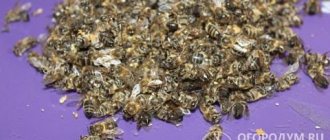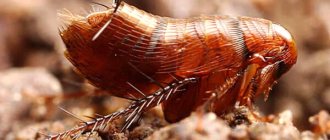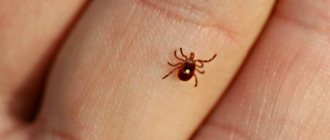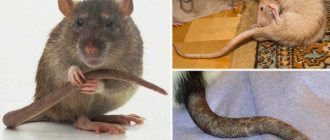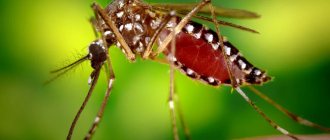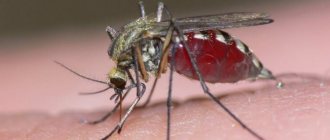- home
- Rat
- Good to know
06/01/2019 Rats are moving further away from their centuries-old role as pests and turning into popular pets. Decorative rats have won the hearts of people, despite the bad reputation of their wild ancestors, and settled in houses as pets. These cute little rodents are smart and quick-witted, loyal and friendly, and last but not least, easy to care for and maintain. The only thing that can upset the owner of the animal is its short lifespan. The article describes how long rats of various species live, what determines the lifespan of a rodent and whether it can be increased.
Lifespan of wild rodents in the natural environment
Wild rats, also called rats, are the most common species of rodent and also the shortest-lived. Living animals in natural conditions has more disadvantages than advantages. At every step, wild rodents face danger, sometimes emanating from their fellow tribesmen.
A mortal threat accompanies Pasyuks from the moment they are born until their last breath. Animals cannot feel safe at any stage of their lives:
- newborn babies are eaten by hungry relatives;
- grown-up individuals are hunted by predators (from wild birds to cats and dogs);
- Adult pasyuki are exterminated by people as pests.
In addition to this, the existence of pasyuks is regularly complicated by bad weather conditions, lack or shortage of food, etc. It is not surprising that in the natural environment, the average lifespan of a rat is 6-12 months. One and a half year old wild individuals are considered long-lived. And for a pasyuk to reach the age of three is fantastic luck, although rare rats succeed in this.
An interesting fact - according to research, the number of pasyuks living on the planet is twice as large as humans. If it were not for the short lifespan of wild rats, these rodents would have long ago filled the entire globe.
Harm to humans
Many people are wary of rats. And for good reason, because they can cause a lot of harm and trouble.
Wild rats
Gray rat: dangerous neighbor.
Rats cause great harm when they get into food storage areas. They can damage various structures, devices, and insulation of electrical cables. They sneak into houses and live in trash cans.
Animals are carriers of various dangerous infectious diseases, such as plague, rabies and several types of encephalitis.
Often wild species of rats come to vegetable gardens and garden plots in search of food. They spoil people's supplies and make their own from grains and root crops. In times of hunger, they eat the bark and roots of trees.
Decorative rats
Decorative rat.
We must remember that rats are rodents, and if an animal living in an apartment is allowed to roam indoors, it can damage the cable, chew documents, and damage furniture. Even during a walk, it is important to monitor the rodent so that it does not cause harm.
Rats can mark their territory with their scent; it is also worth walking them under supervision so that there are no surprises.
We recommend reading: interesting facts about rats. You definitely didn’t know that.
Lifespan of rats as pets
Domestic rats differ significantly from each other in terms of their lifespan - much depends on the care of the owner and the conditions of detention. In most cases, rats live at home for 2-2.5 years - by rat standards, this is already a respectable age.
According to average data, out of every hundred ornamental rodents, only three individuals survive to 3 years of age. Moreover, females reach the age of three much less often than males. By rat standards, 3 years of age is very old. And individuals that have lived for another six months are considered to have completely exhausted the time allotted by nature. Individuals for whom their owners have created ideal living conditions manage to reach this age.
There are cases where rodents living with particularly caring owners managed to celebrate their 5th anniversary. However, one ordinary domestic rat proved to the whole world that 5 years is not the limit. This modest little animal lived to be 7 years old. Her record is listed in the famous Guinness Book and has not yet been broken by any other rat - a truly unattainable result.
Nutrition
How long rats live is also influenced by their diet, so it’s worth writing a few words about that too. Since the diet of such rodents must necessarily contain animal proteins, they eat other small rodents, and also willingly consume fish, amphibians (for example, frogs) and mollusks. But rats also do not refuse plant foods, such as seeds, grains and succulent parts of plants. City rats in most cases consume waste and garbage, and can eat carrion (the remains of animals and birds). There are frequent cases of cannibalism, that is, eating their relatives (most often hungry individuals do this).
Why is the rat's life span so short?
How many years an animal will live depends on its genetics - the lifespan allotted by nature is written in the DNA of the rodent. The lifespan of a rat is directly related to the reproductive ability of the animal.
Rats are ready to breed from 1.5 months of age. In one litter, a female can bring up to 14 rat pups. Having not yet stopped feeding the offspring, the tailed mother is already ready for a new pregnancy. It is because of this that it is prohibited to keep rodents of different sexes in the same cage - the female will give birth continuously, and this will be an excessive burden on her body.
Another reason for the short life of a rat is its high-speed metabolism. Without food, these animals die in just 2-3 days - the rodent body, which does not receive food, eats itself.
To what age do they grow?
Rats grow and develop quickly. This process occurs most actively from birth to 6 months:
- On days 3–4, the ears open.
- Teething begins on days 9–10.
- Eyes open after 2 weeks.
- By day 16, the fur already completely covers the body.
- Molars erupt in 35–40 days.
- At 3 weeks of age, puppies are already eating from the feeder.
- On the 25th day, the babies are separated from their mother.
In addition, the growth of puppies does not stop, but becomes less noticeable. At the age of one year, animals become fully formed. During this period, their weight is 300–600 g: females grow twice as large as males.
Differences in the lifespan of rats depending on breed
Wild, domestic and laboratory rats are far from the only possible classification of these animals. An alternative method is breed division. Thanks to the selective crossing of animals, many different breeds of rats were born, differing in characteristics:
- quality and structure of fur;
- location and size of ears;
- coat color, etc.
The following breeds are worth highlighting as the most famous rat varieties:
- tailless (distinguished by the absence of a tail);
- standard (very similar to wild individuals, but differ in that they can come in a wide variety of colors (gray rat with ash fur, blue rat with azure fur, etc.));
- dumbo (with large ears, which gives them a resemblance to elephants);
- husky (with a color similar to dogs of the same breed);
- satin or simply satin (distinguished by a shiny coat of fine hairs);
- rex (with short, curly fur);
- double rex (distinguished by wool of uneven length and a tendency to shed);
- sphinxes (hairless, i.e. bald).
White rats of all varieties have the shortest lives. The short life is due to the origin of the animals - they were bred artificially to participate in laboratory research and therefore the genome of these rodents is partially damaged. Rare individuals with white fur manage to live up to two years.
Of all the breeds, Sphynxes are considered the shortest-lived. Bald animals have increased vulnerability. They easily get damaged skin, through which infections in turn penetrate. In addition, the naked body of sphinxes, unprotected by fur, is susceptible to sunburn, as well as a strong and painful reaction to temperature changes.
Individuals of the tailless variety are also not distinguished by longevity. Usually their death is associated with some kind of injury. The rat's tail plays the role of a rudder to control the body. Deprived of this important detail, the animals actually do not control their movement in space.
What affects the lifespan of a rodent?
The lifespan of a rat depends on the following factors:
- genetics and heredity;
- belonging to the variety;
- conditions of detention;
- diet, etc.
If wild rodents are responsible for themselves, then the life of a domestic animal is in the hands of its owner. Accordingly, he is responsible for the quality of keeping the pet. If the owner is unable to influence the genetics and breed of the pet, then the living conditions of the rodent are in the control of man.
Lifestyle
Since the lifespan of rats is also influenced by lifestyle, it is worth talking a little about it. In the wild, these rodents dig burrows, and in industrial areas they live in spaces under the floors. Rats often build nests using paper, wool, sticks, grass, rags and other available materials.
Rats are active mainly at night, and their excellent vision allows them to navigate in space even in complete darkness.
Such animals do not become attached to one place and easily change it to another, more favorable one. Rats can lead both a solitary and group lifestyle. There are also entire colonies of up to several hundred individuals. There is even a hierarchy among males in the colony. In addition, such rodents can mark and guard developed territories and occupy them for several years in a row.
A rat can walk about 10-15 kilometers in a day. In addition, these rodents can swim, dive, and even stay under water for quite a long time and hunt. These animals easily adapt to any conditions and can withstand significant temperature changes and even exposure to radiation.
Causes of premature death of animals
Walking outside the cage is deadly for a pet rodent. The animal tries everything that it has access to – outside the cage it can be wires and other dangerous objects. On such a walk, the rodent risks getting:
- electric shock;
- poisoning with something (for example, detergents), etc.
In addition, small pets often suffer serious injuries and even die due to the carelessness of their owners. Owners of rodents often step on the animals, crush them with furniture, etc. Rats move faster than their owners assume, so the latter simply do not have time to notice where the animal has moved. Because of this, accidents occur, often resulting in death for rodents.
Often, animals sneak onto the balcony unnoticed by their owner, from where, due to their semi-blindness, they fall down and, alas, die. The rat's climbing of the curtains and subsequent fall also ends tragically.
Among other things, rats often die from the paws, or rather teeth, of other pets - cats and dogs. These animals are natural hunters, so they perceive rodents as prey. It is also worth noting that a particularly impressionable animal can die from fright - a small rat’s heart cannot stand it.
Tame rats are pampered creatures. Once on the street, they will not survive. To protect your little pet from death, injury and stress, you should keep him in a cage and let him out for a walk only under supervision and only in a pre-prepared, fenced area.
How to increase the lifespan of an animal
The average lifespan of a rat is 2 years. Of course, this is very little. You can extend your pet's life by surrounding him with maximum care, attention and love. Measures necessary to increase the lifespan of a rodent include:
- ensuring optimal conditions of detention;
- creating a balanced menu;
- disease prevention;
- observation of the animal (its behavior, appearance, health, etc.).
Your pet needs a spacious cage. The animal should not be kept in unsanitary conditions. His food and drink must be fresh and clean. In addition, you need to protect the animal from heat and direct sunlight, cold and drafts. You cannot use pine filler for the cage. If you detect the slightest deviation from the animal’s usual behavior or a change in its appearance, you should consult a veterinarian.
It will not be possible to extend the life of an animal by decades. But for a loving owner, every day spent with a pet is important. And with good care, a rat's life can be extended by years.

